Struggling to understand what is an agile methodology or what is agile project development?
Well, you’ve landed on the right page and we will help you in understanding agile project development.
Agile Project Development is used by many organizations to execute their projects effectively. With the ongoing changes in the business world, projects are becoming more and more complex. Thus, agile methods help deal with this complexity better than the traditional waterfall techniques.
What is agile project development?
Agile project development uses agile values and principles (Agile Manifesto) to develop the projects. Agile methodologies aim to use easy, flexible, and iterative approaches to build products.
The projects are delivered in smaller chunks to ensure effectiveness and timely execution. Moreover, agile approaches help cater to the stakeholder’s needs better through constant interaction and changes throughout the project lifecycle.
Thus, agile methodologies are best for companies with complex projects yielding continuous changes.
Benefits of using Agile Product Development Processes
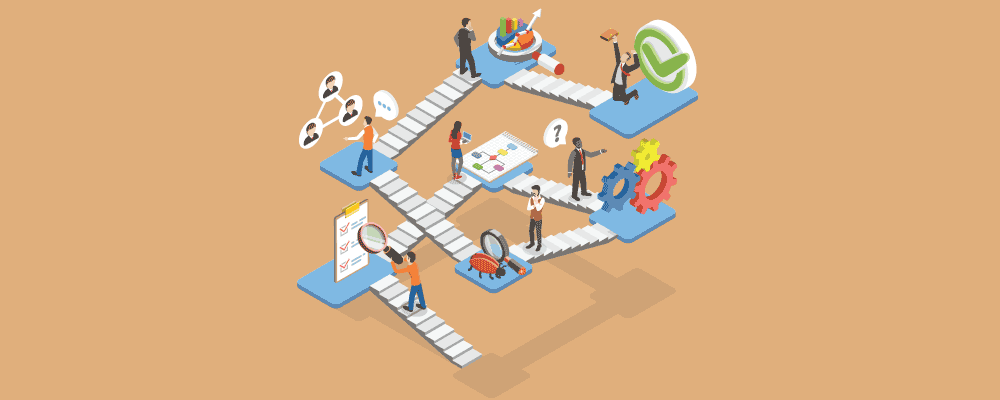
Some of the key benefits of using agile project development processes are:
- Increased Stakeholder satisfaction
- Timely delivery of products
- Lesser room for errors
- Increased team collaboration
- Better productivity
- More responsive to the market and changing needs
- Better adaptability
- Mitigates risks
- Quick identification of bottlenecks
- Effective reporting and analysis of each stage
The 4 core values of the Agile Manifesto
The core values of an agile manifesto are:
- Individuals and interactions over tools and processes
- Working software over detailed documentation
- Customer collaboration over contract negotiations
- Responding to change over sticking to the plan
12 Principles in Agile Manifesto
While we are at it, let’s quickly go through the 12 principles of the agile manifesto. These include:
- To satisfy customer needs through early and continuous delivery of software.
- To welcome and adapt to changing requirements at any stage of project development.
- To deliver the working software within shorter periods.
- To ensure that stakeholders and developers work together throughout the project lifecycle.
- To provide an environment full of support and trust to get the job done.
- To have face-to-face interaction to increase efficiency and effectiveness.
- To make the working software the primary measure of progress.
- To promote sustainable development through agile processes.
- To pay attention to good design and technical excellence.
- To maximize the amount of work not being done.
- To encourage self-organizing teams.
- To reflect and improve their processes regularly.
So, now that we have gathered some basic knowledge on agile project development let’s look into its methodologies. In this blog, we’ve mentioned the critical 5 agile methodologies.
5 Key Agile Methodologies
Here is an overview of the top 5 agile methodologies for effective agile project development.
1. Scrum
Created by Ken Schwaber and Jeff Sutherland, Scrum is a simple framework for executing complex projects with agility. According to the Scrum Guide:
“Scrum is a lightweight framework that helps people, teams, and organizations generate value through adaptive solutions for complex problems.”
Thus, we can comprehend that Scrum helps teams break down tasks into simpler solutions. But what happens when a team chooses Scrum as their project methodology?
Agile Scrum Processes uses an iterative approach, meaning that the project is divided into smaller tasks or iterations, which are called “Sprints.” These sprints are completed in 2-3 weeks, known as the sprint cycle.
Thus, the product owner or the Scrum Master divides a bigger project into multiple sprint cycles. However, besides just breaking the project into smaller tasks, Scrum Methodology follows a proper process.

Here is an overview of what is agile project development with scrum processes!
Step 1: Project Epics
The term Epics in Scrum methodology is used to describe the project objectives or goals broken down into smaller chunks.
Step 2: User Stories
Once you know the Epics of your project, break them into smaller user stories. These are typically the needs and requirements as per the user’s perspective.
Step 3: Sprint Backlog
The next step is to create a sprint backlog. User stories are picked on a priority basis from the high value to the lowest in the sprint backlog. The development team works on the selected sprint within 2-3 weeks.
Step 4: Daily Stand-ups
Having daily stand-ups is an essential aspect of the successful implementation of sprints. The whole spends 10-15 mins every day to overview the sprint’s success being worked on and be aware of the bottlenecks.
Since customer demands keep on adding up and changing in an agile approach, daily stand-ups are the best way to ensure that the whole team stays on track and in sync with each other.
Step 5: Release Sprint
After 2-3 weeks, the sprint is released. The whole team will meet with the stakeholder to ensure that it is done as per the requirements.
Moreover, on the completion of each sprint, retrospective meetings are also held to have a briefing on what has been done and the hurdles in its completion.
So, unlike the traditional waterfall methodology, Scrum processes to enable the teams to deliver projects better, faster, and as per the stakeholder’s requirements. Thus, it increases the project’s efficiency and helps teams find faster solutions to problems.
2. Kanban
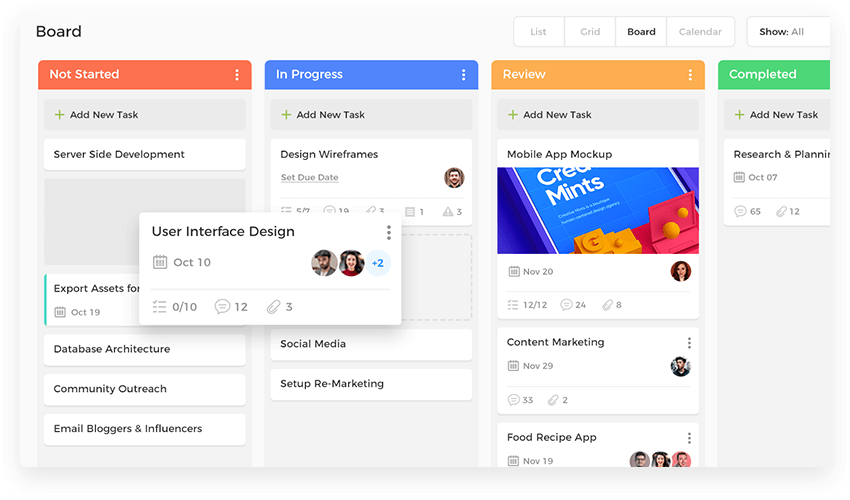
Introduced by David Anderson in the 2000s, the Kanban methodology is widely used to handle agile project management. So, what is agile project development with Kanban processes?
Kanban, unlike Scrum, doesn’t wait for 2-3 weeks to complete an iteration. Thus, it is a non-disruptive evolutionary method with continuous delivery and constant feedback. This makes the delivery of projects faster and more accurate.
Moreover, Kanban is derived from Chinese origin, which means view the board. Therefore, the Kanban approach also fully visualizes the product workflow on one large panel. The board is typically divided into the following sections:
- Stories: These are the requirements as told by the user.
- To-do: The selected tasks which are to be worked on.
- In progress: The tasks in progress.
- Testing: The tasks which are in review.
- Done: The completed ones.
The Kanban methodology helps identify the risks and bottlenecks better through visualization. Project managers can view the reason for the delay in projects and track progress effectively. Moreover, it also helps increase collaboration, and productivity, reduce errors, and have automated workflows.
Therefore, a methodology devised by Toyota has become various organizations to manage their projects in the most agile manner. Know more about Kanban through our blog on Kanban methodology.
3. Extreme Programming (XP)
It is the third agile methodology used by various organizations. So, what is extreme programming with extreme programming?
Extreme Programming was introduced by Kent Back in the 90s. It is also known as Paired Programming, as teams work in pairs to execute the project. The goal of XP is to promote interpersonal relationships and teamwork through effective collaboration.
So, here is how it works.
A pair of developers work together while one works and the other observes. In the course of the project, the roles keep on changing. Moreover, through this continuous review and feedback is ensured. This helps to increase the efficiency of the processes and leaves minimum room for errors.
So, Extreme Programming (XP) is the best methodology for projects with ever-changing requirements. The continuous integration of new user needs and client feedback keeps the smooth communication flow between the clients and the development team.
The typical workflow of Extreme Programming looks like this:
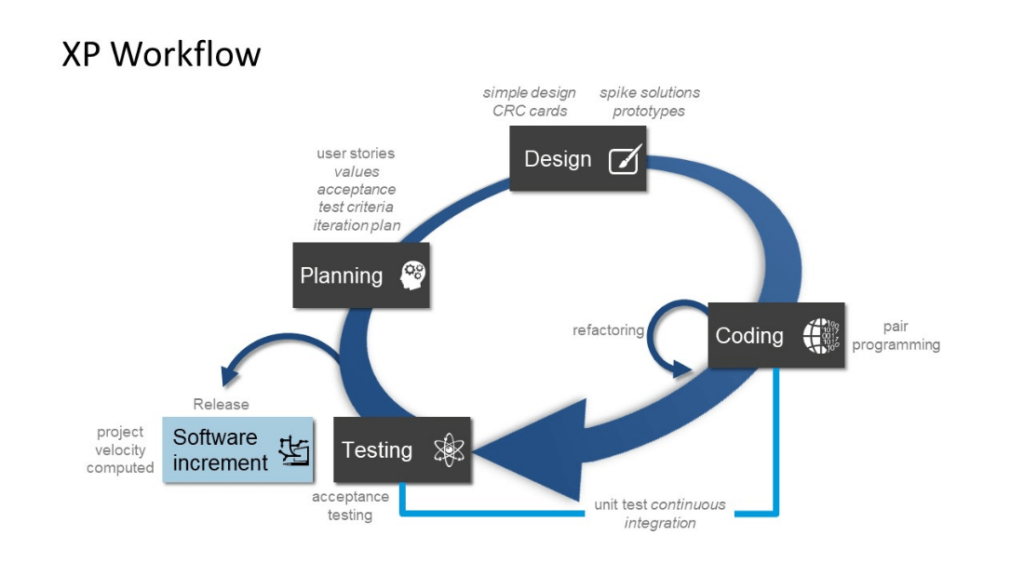
4. Adaptive Software Development (ASD)
So, the next one is what is agile project development with ASD?
This methodology was also developed in the 90s by Jim Highsmith and Sam Bayer. The methodology revolves around three basic principles I-e Speculate, Collaborate, Learn. To adapt and not fight against change. Thus, it also helps to promote teamwork, collaboration, and rigorous feedback from the clients.
Adaptive Software Development is an offshoot of Rapid Application Development ( RAD). So, it helps teams to rapidly adapt to changing environments and requirements by modifying their products. It also helps to increase transparency between the clients and the teams.
So, the three-phase development in ASD has the following significance:
- Speculate: This is the initial of the project development stages, where the goals and objectives of the project are defined, and the risks and limitations associated with it are identified.
- Collaborate: In this stage, the whole team collaborates and shares knowledge with different teams. This stage makes sure that the knowledge is centralized and everyone is aware of all the processes.
- Learn: The last stage is the learning stage, where the whole team learns from its positive and negative outcomes for effective future improvements.
Thus, ASD is a simple yet powerful methodology for teams to handle their projects in a connected, flexible and streamlined environment.
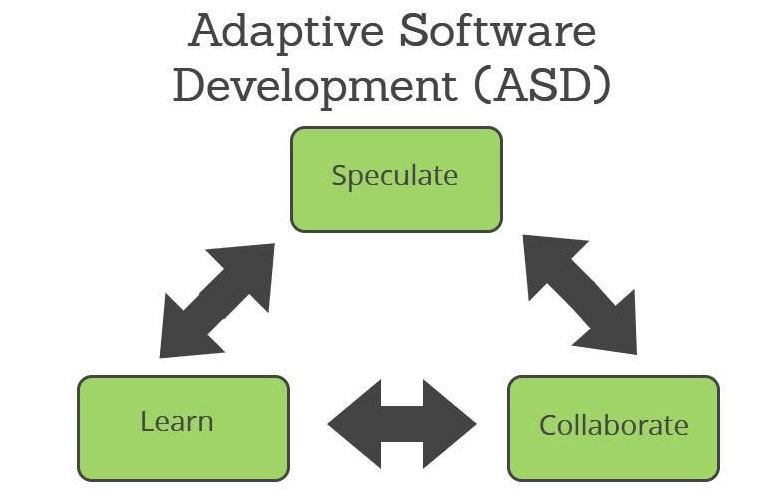
5. Dynamic Software Development Method (DSDM)
This is the last one on our list of key methodologies for Agile Project Development. This process works best for organizations that have tight budgets and schedules. It was developed by a group of vendors and experts.
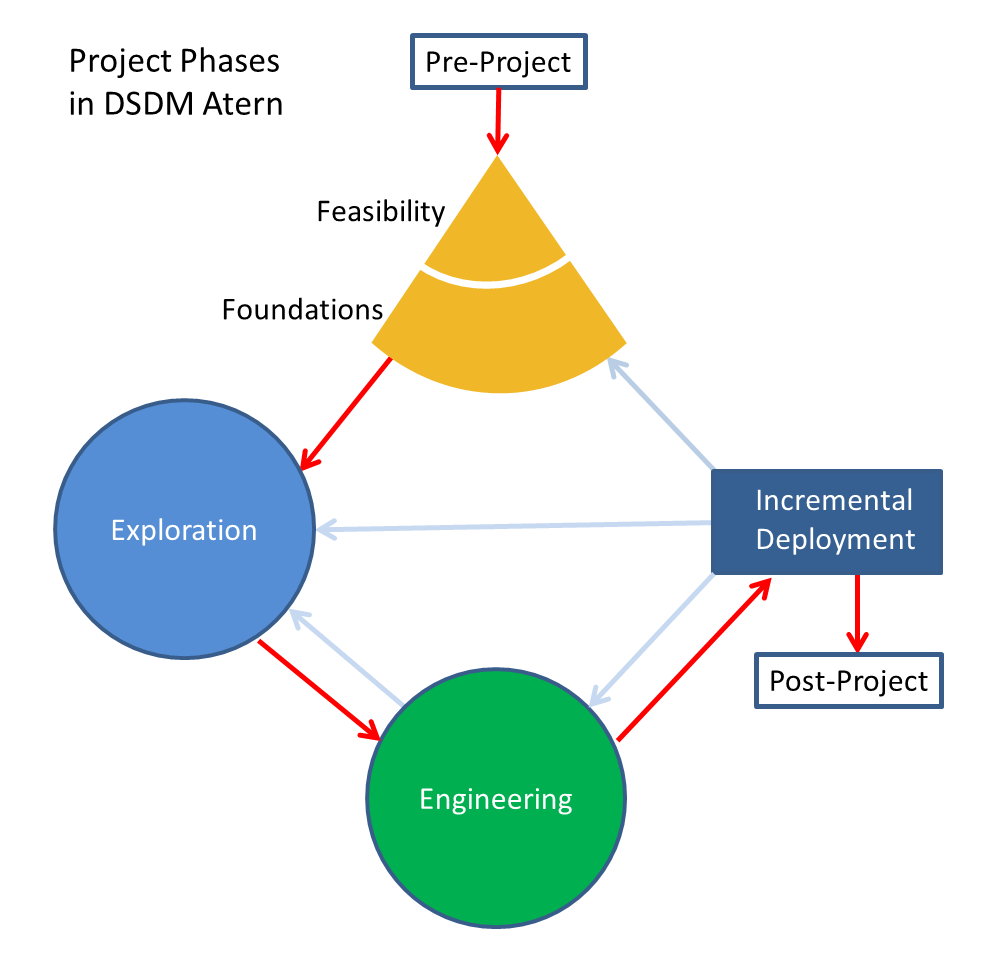
The DSDM approach ensures timely delivery of projects with the following principles:
- Increased focus on business needs
- Ensures timely delivery
- Increased collaboration
- No compromise on quality
- Continuous communication
- Full-control
- Iterative development
- Built from firm foundations
Thus, it is a great technique to help organizations adapt to change and improve their capacity to deliver better and reduce time.
To wrap it up!
So, what is agile project development anyway?
Agile is all about finding easy and flexible ways to control your processes. You must be very clear on this question now. There are many other methodologies involved in agile project development as well. However, you can choose the one that best suits the needs and requirements of your business.
Thus, if you’re ready to become an agile team now, pick up the best methodology!
We hope this has helped you in understanding agile project development, wish you the best of luck!

